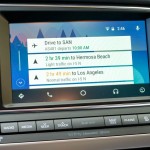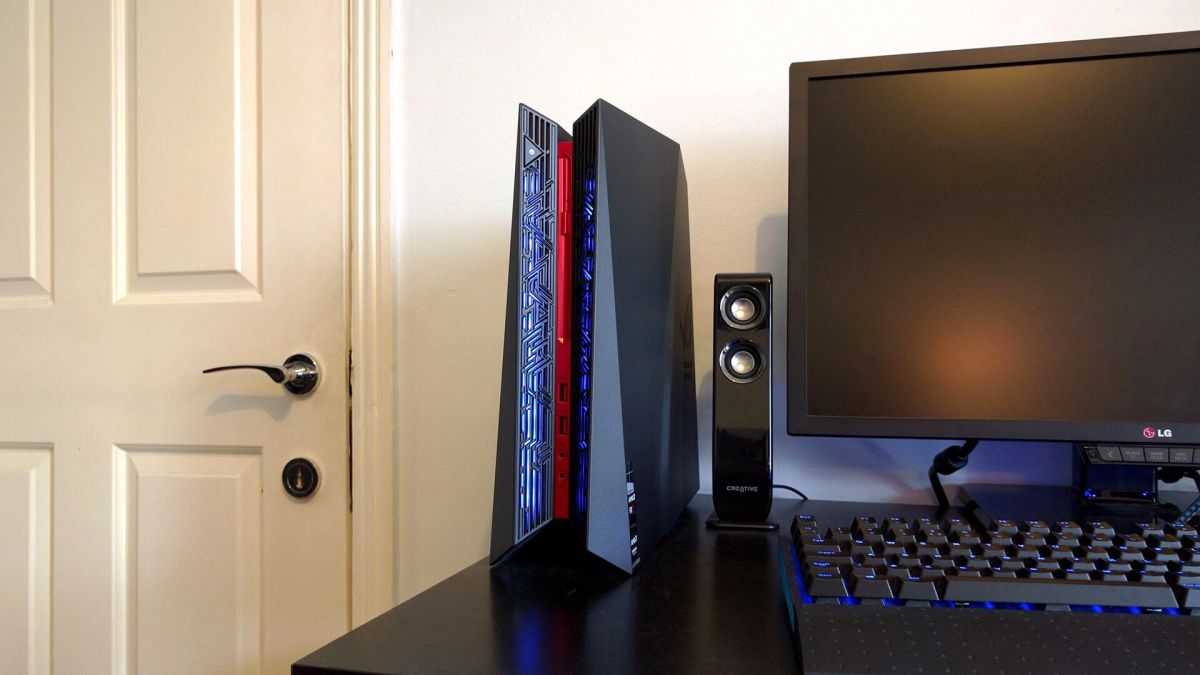
Introduction and design
When most people think of gaming PCs, I suspect they imagine models like the Acer Predator G3 – huge, floorboard-straining super-rigs.
The Asus ROG G20BM aims to be different — a desk-friendly machine that, like the Alienware X51 — opts for a small form factor (SFF) case that means it’s hardly any bigger than a games console. It has a much narrower footprint than the kind of flatter, wider cases often favored by mini-ITX builds.
With its angular edges, the G20BM certainly has a look of Sony’s PS4 about it.

Asus hasn’t completely rejected typical gaming PC excess, mind you — the Mayan-inspired patterning, customizable lighting and angular lines make the G20BM look like an alien obelisk fallen to Earth.
The big squeeze
The G20BM’s reduced bulk comes at a couple of costs. The first is the literal cost: it will set you back $1,040 (£750 in the UK, which is around AU$1,460), far more than the sum of its lower-end parts.
That’s £50 (around $70/AUS$95) more than the Predator G3, which doesn’t look anywhere near as good on your desk but packs more of a punch for its asking price.
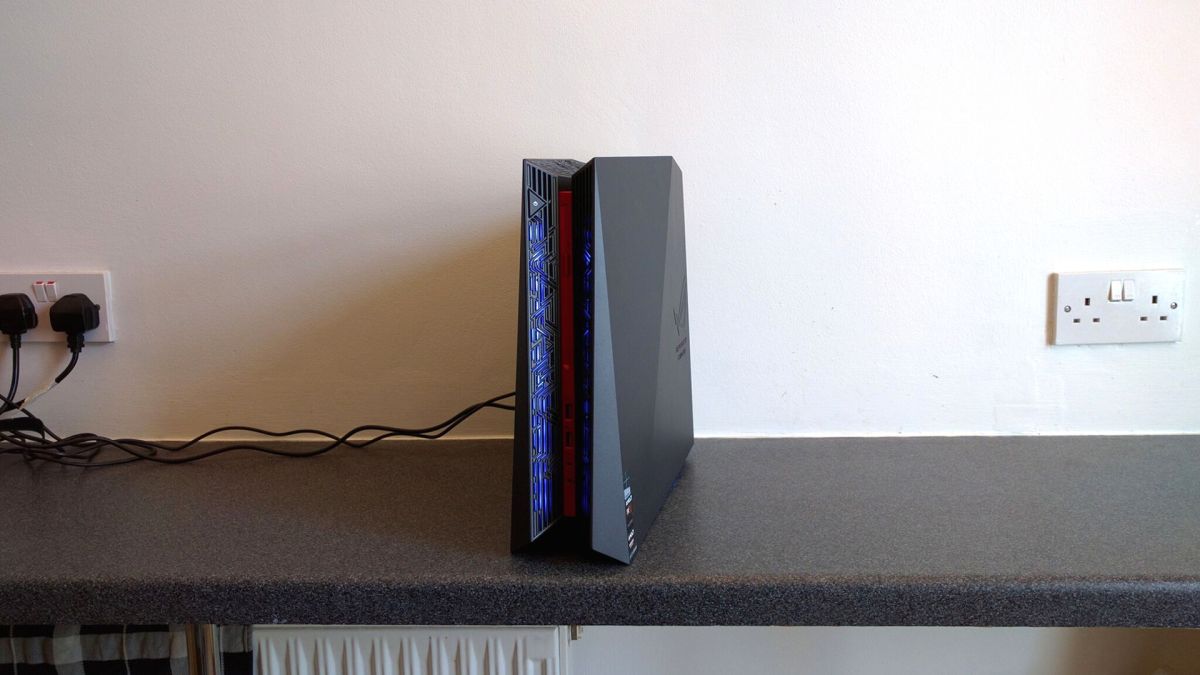
The ROG G20BM is a huge pain to upgrade. Components are stacked on top of each other and held in place with numerous tiny screws. To swap out the HDD, you have to unscrew and remove the GPU before being able to access the drive, while changing the RAM demands that the entire main cooling unit be unfastened.
There’s also no room for an internal power supply (PSU), and for some reason the graphics card is fed electricity through a separate cable. The solution is a faintly ludicrous double-decker power brick that needs two sockets to function, something that could give cable-tidying obsessives heart palpitations.
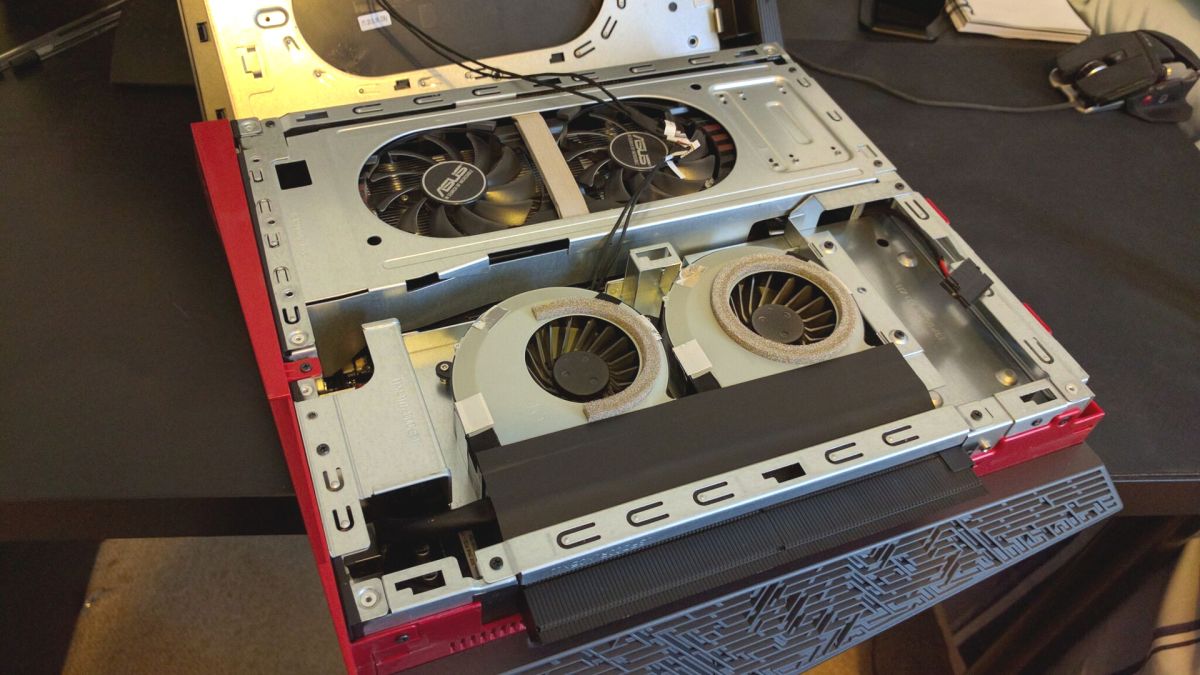
The internal fans are pretty small too, and so to shift enough air to keep the ROG G20BM cool, they need to ramp up to full speed and stay there – creating an awfully loud, high-pitched whirr.
Specifications and performance
The ROG G20BM packs a lower-mid range GPU, the AMD Radeon R9 390, as well as a modest AMD FX-770K CPU. RAM is set at 12GB, which is 4GB more than you really need for 1080p gaming, though it runs at a relatively unimpressive 1,600MHz. The Predator G3, on the other hand, opts for an Intel Core i5-6400 processor (quad-core, 6MB cache, up to 3.3GHz with Turbo Boost) rather than an AMD variant.
More positively, the 2TB hard drive inside the G20BM means you won’t be lacking storage. An SSD would be faster, naturally, but the sheer size of the included drive is a fine consolation.

Spec sheet
Here is the spec sheet of the Asus ROG G20BM provided to techradar:
- CPU: 3.5GHz AMD FX-770K (quad-core, 4MB cache, up to 3.9GHz with Turbo Core)
- Graphics: AMD Radeon R9 390 (2GB GDDR5 RAM)
- RAM: 12GB (2 x 6GB) DDR3 (1,600MHz)
- Storage: 2TB HDD (7,200RPM)
- Ports: 2 x USB 3.0, 6 x USB 2.0, DVI-D dual link, DVI-I dual link, HDMI, Ethernet, 2 x headphone jacks, 2 x microphone jack, line in, left speaker in, right speaker in, rear speaker in
- Optical Drive: DVD R/W drive
- Connectivity: 802.11n Wi-Fi, Bluetooth 4.0
- Size: 4.1 x 14.1 x 13.4-inches (W x D x H)
The G20BM has all the connectivity and functionality you’d expect from a full-size tower, including a whopping eight USB ports – enough for a full suite of peripherals and then some – plus a DVD R/W drive.
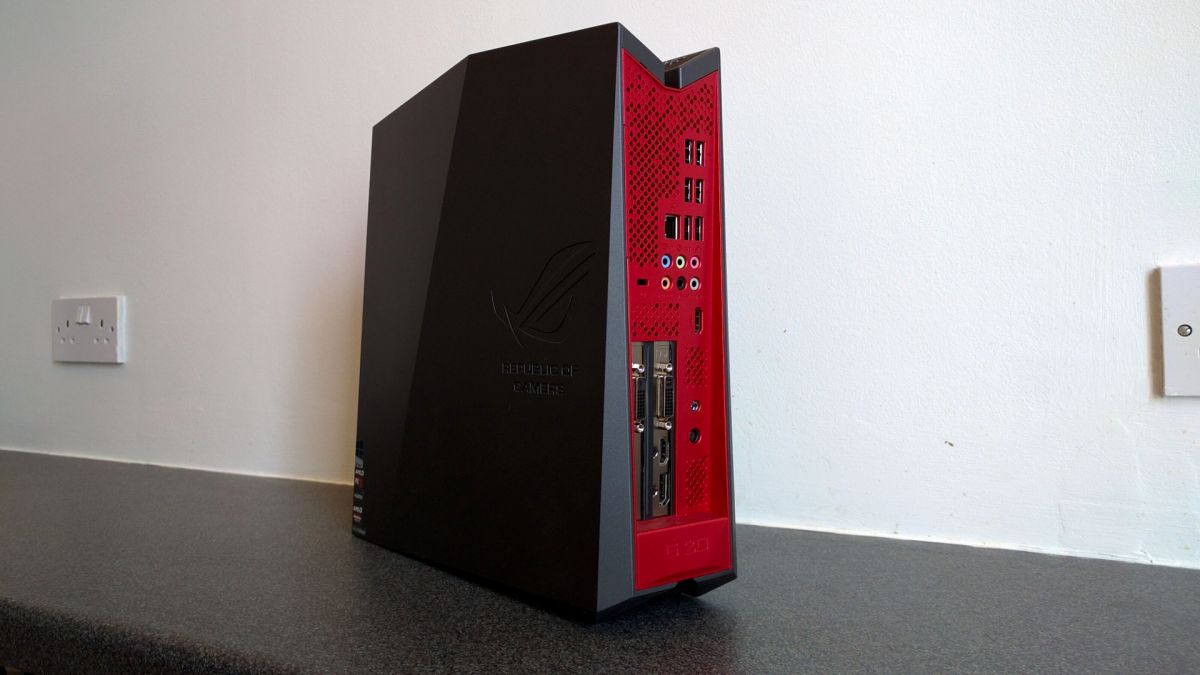
Performance
I wasn’t expecting superb performance from the ROG G20BM, but it was still a bit surprising to see just how much this PC struggled with high-fidelity gaming. It only managed playable frame rates at Ultra quality in Middle Earth: Shadow of Mordor, and it also disappointed in PCMark 8 and Cinebench.
If you’re seeking a 1080p monster that eats games for breakfast, the G20BM will leave you disappointed. Depending on the title, dialing down the graphics options isn’t just recommended — it’s vital to get hold of a semi-decent gameplay experience.
Benchmarks
Here’s how the Asus ROG G20BM performed in our suite of benchmark tests:
- 3DMark: Cloud Gate: 10,297; Sky Diver: 11,868; Fire Strike: 4,576
- Cinebench: CPU: 270 points; Graphics: 61.84 fps
- GeekBench: 2,292 (single-core); 6,793 (multi-core)
- PCMark 8 Home Test: 2,655
- Middle Earth: Shadow of Mordor: 1080p, Ultra: 45 fps; 1080p, Low: 102 fps
- Grand Theft Auto V: 1080p, Ultra: 11 fps; 1080p, Low: 52 fps
These benchmark scores illustrate the difference in graphics grunt between the AMD GPU in the G20BM and the one in the Predator G3, which came out on top in every test.
Acer’s machine scored 2,655 in PC Mark 8’s home test, versus the Predator’s 4,125, highlighting how much more capable the G3 is at handling everyday computing tasks such as playing video, browsing the web, holding video conversations and editing images.
In games, too, the Acer came out on top, managing 39 fps in our grueling GTA V Ultra settings benchmark. The G20BM coughed out an unplayable 11 fps on the same test.
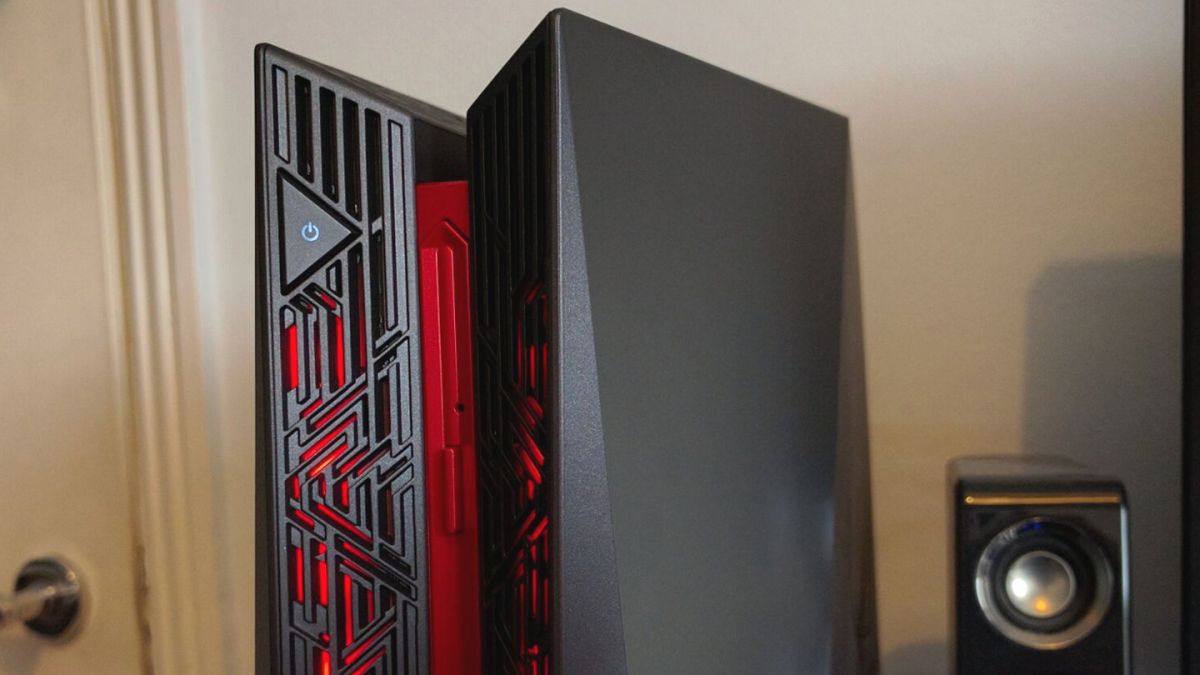
To be fair, benchmarks alone don’t tell the whole story – good frame rates in the latest games are possible — it’s just a bit of a balancing act.
The G20BM hit the magic 60 fps mark in Call of Duty: Black Ops III and even at points in Metro: Last Light, provided we stuck to a combination of low and medium settings. That said, smooth performance on higher settings is generally out of the question.
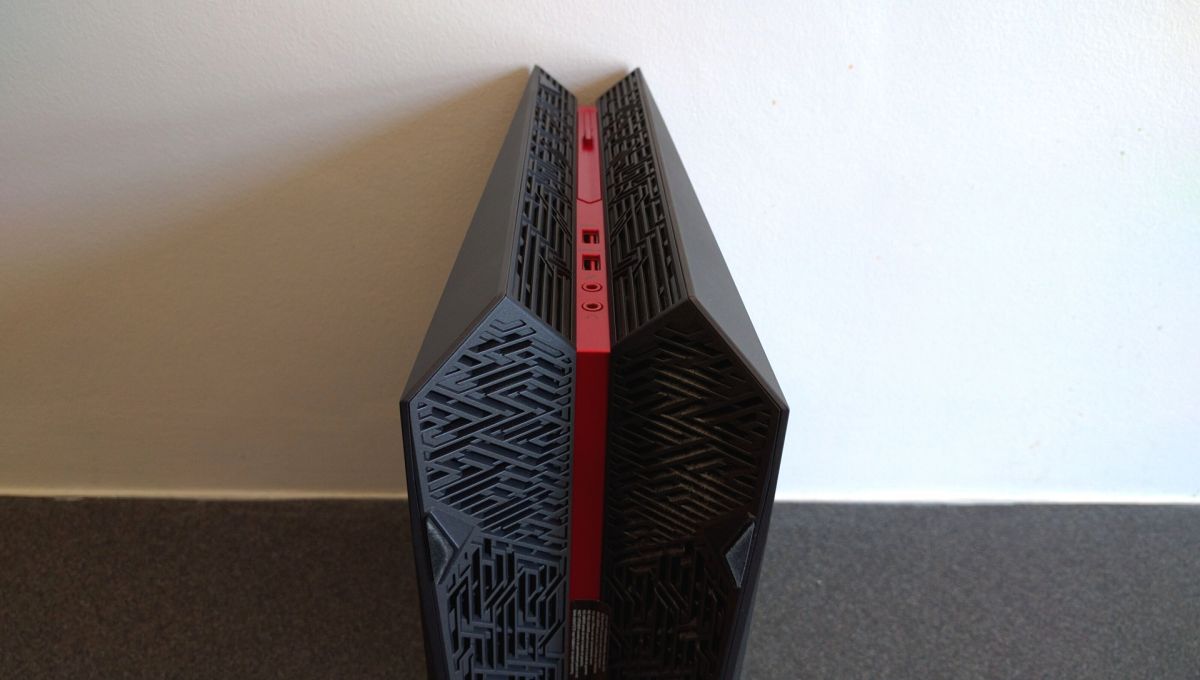
Bundled software
Asus hasn’t gone quite as bloatware-happy as it usually does, but there are still a few pre-installed applications.
Putting aside things like Candy Crush Soda Saga and a trial of McAfee Internet Security, here are the programs that might actually prove useful:
- Asus Command: Update drivers, customise LED lighting and securely delete files
- Asus AEGIS: Monitor CPU and cooling status
- CyberLink PhotoDirector: Edit images and create slideshows
- CyberLink PowerDirector: Import and edit video clips, then burn them to a DVD
Verdict
I love the idea of a PC that combines console proportions with full-on desktop functionality, but I also expect such machines to beat those consoles in performance terms – especially at triple the price. The ROG G20BM, unfortunately, just doesn’t deliver.
We liked
This is a petite and good-looking PC which retains the connectivity capabilities of a full tower. It can also be opened and upgraded, albeit with some difficulty.
The huge HDD provides plenty of room for games and files, and helps to lessen the impact of Asus’ bloatware. Then again, it’s good to have resource-monitoring tools, as well as an app for picking from millions of LED colours, straight out of the box.
We disliked
Weak internals mean that, with the exception of older or technically undemanding games, the ROG G20BM can rarely handle AAA titles on anything higher than medium settings. Despite this, it’s priced higher than most entry-level PCs, killing any suitability it might have had as a budget option.
I also tired pretty quickly of having to equip a headset for every gaming session – the cooling system was consistently loud enough to drown out my speakers, sadly.
Final verdict
The ROG G20BM could possibly find a niche as a Windows 10-powered Steam Machine alternative, a device for non-enthusiasts to hook up to their living room TV for Minecraft and the like.
Anyone with a more serious interest in PC gaming, on the other hand, should keep looking. This is far from the only SFF gaming rig on the market – indeed, it’s worth considering a similarly-priced Alienware X51 configuration, which can include the respectable mid-range Nvidia GTX 960.
Source: techradar.com







































